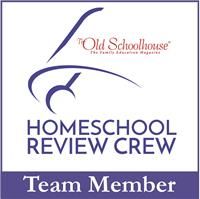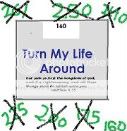I love being able to find educational games to play with the children, because learning is so much more fun while engaged in play. So, when I learned about the award-winning Continent Race game from Byron's Games I was definitely interested. Then I discovered one of the girls' classes at our homeschool co-op was world geography. It was like, oh awesome, perfect timing. And of course, ever since the older girls were doing preschool, I've tried to incorporate map work into our school days, starting with our town and then looking at the states of the USA. Until, with our core curriculum, we were looking at world geography.
We received this fun geography card game, which was created by a boy named Byron while he was stuck in the hospital for a month being treated for an unexpected illness. It just happens that this was during the Olympic games of 2016 and he had been keeping track of the country medal counts with Mrs. Ellen Donovan from the Family Life Center. She challenged him to create a game that included the flags of the country, and Continent Race is what he ultimately created.
I was extremely glad for the opportunity to play Continent Race with the children, especially because Hannah and Harold were really too young to benefit from our focus on world geography four years ago. However, as we were playing the game, I realized even I haven't heard of so many of these countries on the other continents of the world. So, this has been a learning experience for all of us.
The game is primarily a card game that utilizes the huge world map board plus the continent cards. Here is a look at what is included:
The foldable world map board
5 double-sided Continent Cards
- Australia/Oceania
- The Americas
- Asia
- Europe
- Africa
205 country cards
3 Antarctica Wild Cards
And they even included several rubber bands to help hold the cards together.
Instruction sheet
The double-sided Continent Cards have a map on one side. I love that there is a world map inset in the bottom left corner which highlights where the continent is in the world.
These maps are slightly smaller than the corresponding map on the game board.
The reverse side of the card lists all the countries in the continent alphabetically. At the top of the list, it tells you how many cards from the continent have to be collected during game play.
The cards are the main part of the Continent Race game. The majority of the cards are the regular color-coded country cards which feature the country's flag, name, and capital. Then there are the Antarctica cards which are used as wild cards, seeing as there are no countries on the continent. Finally, there are the 52 Mystery Continent cards for advanced play.
The object of the game is to be the first to collect the required amount of country cards for three continent cards (basic play) or all five continent cards (advanced play).
The basic game does not include the Mystery Continent cards. These cards are all orange and have a little question mark in magic wand/magnifying glass. They have all the same information as the normal country cards; however, players need to figure out what continent they belong on. As I mentioned, the normal cards are all color coded to match the color of the continent on the maps. So, seeing as the Mystery Continent cards are all orange, the player doesn't automatically know what continent they belong to.
Each player is dealt seven cards, and game play moves around the table clockwise. On his or her turn, a player will draw a card and try to make a continent set of 4 cards (2 for Australia/Oceania). If a set is made, the cards are laid down on the table, face up. The player then replenishes his or her cards and discards one, so as to always have 7 cards in hand.
Each player is dealt seven cards, and game play moves around the table clockwise. On his or her turn, a player will draw a card and try to make a continent set of 4 cards (2 for Australia/Oceania). If a set is made, the cards are laid down on the table, face up. The player then replenishes his or her cards and discards one, so as to always have 7 cards in hand.
As the player lays down the cards, the country's name is announced. We also make sure to say what the capital is and what continent it is on, though it isn't required as a part of the game.
I have to say, it has been interesting trying to pronounce some of these countries that we have never heard of.
If a set hasn't been created, the player just discards a card.
In the basic version of the game, Harold would have won in the following picture.
However, even though we aren't playing the Advanced version yet, we have decided we want to have the winner complete sets for all 5 continent cards.
To add to the challenge in the game, a person doesn't technically win as soon as they collect all the sets. They also have to call out the countries on their cards and find them on the map. Younger children are permitted to have help for this step.
As we become more familiar with the game and the different countries, I have decided we will start adding in the Mystery Continent cards a little at a time. I plan to start with countries I have at least heard of, then add it other, less well-known countries. According to the instructions, once a Mystery Continent card is drawn, the player can call out "Mystery Continent" to ask for help locating it. Use of the lists is allowed.
A further challenge for advanced play can be found on certain cards. There is a challenge symbol on several of each of the continents' cards.
If such a card is drawn, the player can challenge another player to see who can say the most countries from that continent. Or, another variation is to take turns saying a country's name until one of the players can't come up with another one. Prior to taking part in the challenge, both players are allowed approximately 15 seconds to study the list or map. The player does not need to challenge anyone, but doing so offers the possibility of being able to draw 3 additional cards to find ones useful to their hand.
I am really enjoying this game and think it is a great way to work on learning the different countries in the world, recognizing their flags, and learning the capitals. Young children can play just by being able to match the colors, and they can have help pronouncing the names and finding the countries on the maps. In fact, even older children can take time in between turns to look at the maps to figure out where their countries are located. I love that they have to locate the countries in order to win the game. The addition of the maps makes this more than just a color matching card game, but instead, a wonderful opportunity to discover where the counties of the world are located.
Another wonderful resource is the Have Fun tab on the Byron's Game website. From here you can find pronunciation videos and PDFs to help you learn how to pronounce the country names. And let me tell you, some of them have really stumped even mommy and daddy. There is also a score card in case you want to play multiple rounds, and flag coloring templates. AND they even have a Continent Race World Puzzle app which is available for iPhones and Androids!
Continent Race from Byron's Games is most definitely a game I can recommend, whether you homeschool your child(ren) or not. It is a wonderful way to learn about this great world we are a part of.
A further challenge for advanced play can be found on certain cards. There is a challenge symbol on several of each of the continents' cards.
I am really enjoying this game and think it is a great way to work on learning the different countries in the world, recognizing their flags, and learning the capitals. Young children can play just by being able to match the colors, and they can have help pronouncing the names and finding the countries on the maps. In fact, even older children can take time in between turns to look at the maps to figure out where their countries are located. I love that they have to locate the countries in order to win the game. The addition of the maps makes this more than just a color matching card game, but instead, a wonderful opportunity to discover where the counties of the world are located.
Another wonderful resource is the Have Fun tab on the Byron's Game website. From here you can find pronunciation videos and PDFs to help you learn how to pronounce the country names. And let me tell you, some of them have really stumped even mommy and daddy. There is also a score card in case you want to play multiple rounds, and flag coloring templates. AND they even have a Continent Race World Puzzle app which is available for iPhones and Androids!
Continent Race from Byron's Games is most definitely a game I can recommend, whether you homeschool your child(ren) or not. It is a wonderful way to learn about this great world we are a part of.
Don't forget to click on the banner below to see what my fellow Crew Mates had to say about Continent Race or Connections Stationary Kit (the other product from Byron's Games that the Crew reviewed).














































































![[PREMIO2009.png]](https://blogger.googleusercontent.com/img/b/R29vZ2xl/AVvXsEjXD_Gx-wZ9EM5hXKrEYLksEBkYfRQtmb8VDVTDG_yyLggQoFIstZsh4zszdG20KqErZicRzEhiNYLty7j3IMXJYsABqkXjr8pp-ncj71xCbpxlXGbGpZq2fTuDQqq1RMKV4DPcDBnBViA/s1600/PREMIO2009.png)



